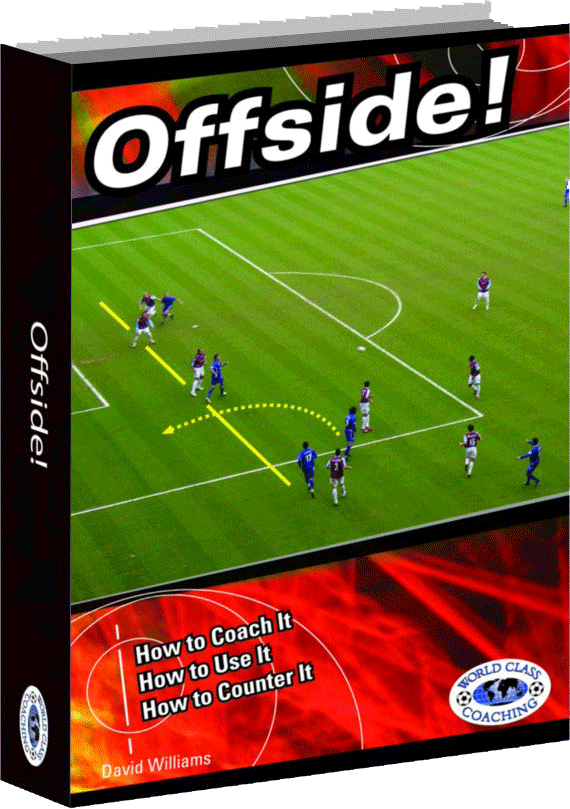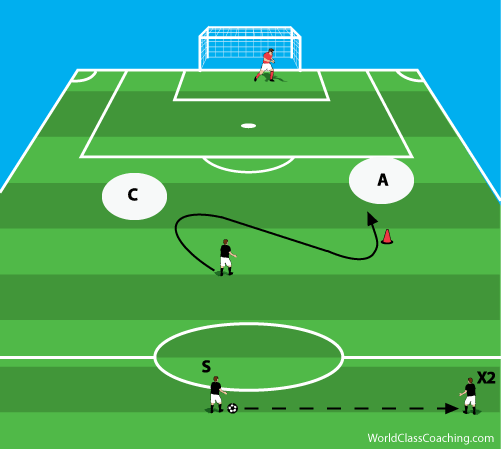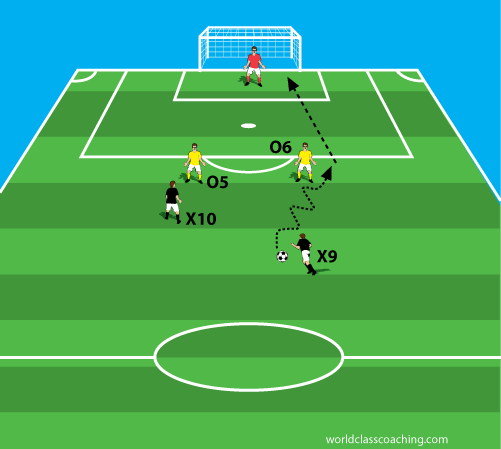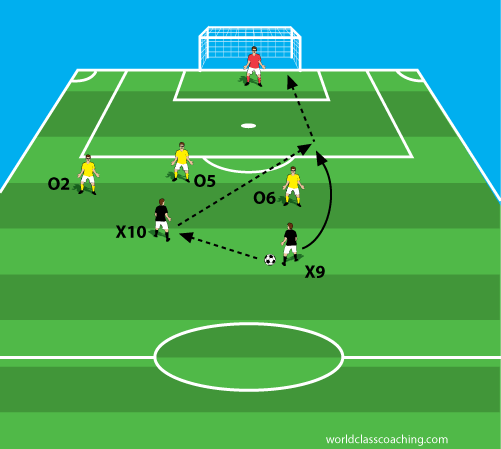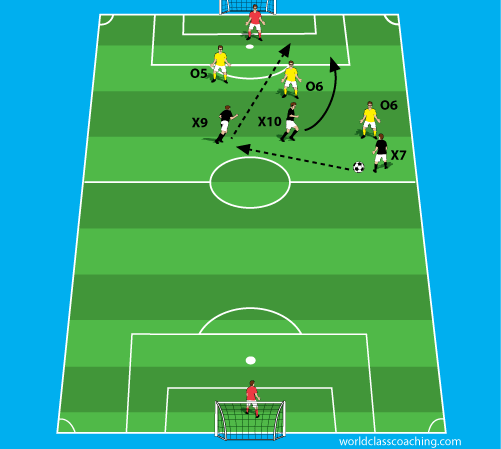I've never been a fan of teaching youth teams to operate an offside trap. My feeling is that the time spent teaching this tactic is far better spent training players to better understand defending. You're also leaving the success or failure of your defense in the hands of the referees. Even with very good referees, your only one missed call away from a breakaway and likely goal.
I do believe that it's a good idea to spend some time teaching your players how to beat the offside trap. This knowledge is not only useful against trapping teams but also against teams that play a regular pressure-cover-balance defense. A book I've taken some ideas from is, 'Offside! - How to Coach It, How to Use It, How to Counter It.' This book does a great job of explaining how teach the tactic as well as how to beat it.
There are a number of different ways that you can combat the trap. I focus on four of them: bending runs that are timed with the pass, attacking defenders 1v1, give-and-goes and diagonal balls behind the defense.
Here's a drill from, 'Offside!' that I use to teach timing and bending runs.
Not surprisingly, strikers are usually the biggest culprits when it comes to being caught offside. Their desire to get beyond defenders and through on goal is at the root of the problem. Coaching them on how to time their runs, as well as the type of runs, is very important. Start with the practice above.
The server passes to X2 who has to control and pass the ball into space A, beyond the cone. The cone represents the line of offside. If X9 were to run directly into that space he could easily be allowed to run offside. He needs to firstly move away from the ball as it travels from the server to X2.
This is to try to get on the blind side of his marker and also take the marker in the opposite direction to where he really wants to go. Then as X2 receives the ball, X9 should make a flat run or even an arced one, towards the cone. His eyes must now glance between the cone and X2, so that he only runs forward beyond the cone after X2 plays the pass, thus ensuring he is on side.
Having mastered this, replace the cone with a defender who might move a yard or two forward or back, as in a real game. X9 can now adjust his run based on this defender.
Practice on both sides of the pitch, and also consider varying the position of the server in playing passes to X2. As the coach, take a position as shown in the diagram so you can monitor X9’s position and judge whether his timing and movement are good enough.
Teams using offside as an important tool in their defensive strategy are never comfortable when facing players capable of dribbling. Having the beating of an opponent centrally can be just as dangerous as in wide areas. The biggest danger to the back line now is the striker who comes deep, away from his marker, and is able to turn and run at his opponents. Initially such a player tries to exploit the space between the midfield players and the back line.
X9 has come away from O6 and is able to turn. There are several options now available. If O6 held his ground, then as discussed, the first thing for X9 to consider is to simply run at the defender and try to beat him. His success is likely to depend on where on the field it occurred.
Give-and-Goes can be a useful method to get behind the defense through the middle or down the wing. You're basically playing a diagonal ball behind the defense.
Playing a diagonal ball over or through the defense forces the defense to turn and chase back toward their own goal. With the ball behind them, everyone on the attacking team is now on-side so players making supporting runs become very dangerous.
There are many other things that a team can do to defeat offside trap including adjustments to a teams formation. How do you train your teams to deal with the offside trap? Leave a comment to this post and share your ideas with other coaches.
Have a Great Day!
Tom

